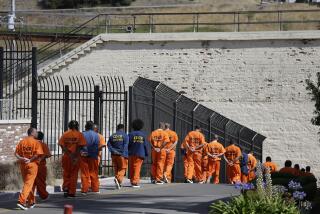Financial Costs of ‘3 Strikes’ Law
- Share via
Pundits in the media and academia, including The Times, predictably continue to bemoan the “three strikes and you’re out” law, most recently by inferring that its financial costs are ruining Los Angeles County and other local governments (editorial, Dec. 11). In lamenting the cost of ending “revolving-door justice,” however, The Times inaccurately described the provisions of this law as follows: “Defendants convicted of a third felony face prison terms from 25 years to life. Second felony convictions carry double the usual sentence.”
The law provides that someone convicted of any third felony who has been previously convicted of two serious or violent felonies shall receive a sentence of 25 years to life (or three times the sentence for the third-strike felony, whichever is greater). The second strike provision--double the usual sentence--only applies to criminals previously convicted of a serious or violent felony and then convicted of a second felony.
Virtually every description of “three strikes” ignores the law’s requirement that second and third strike felons serve at least 80% of their sentences, rather than receiving as much as 50% time off for so-called “good behavior” or “work credits.”
The typical news media refrain about “three strikes” is that it is sweeping up small-time crooks who simply “stole a piece of pizza” or “stole a few cookies in a botched burglary attempt.” “Poor, hapless, harmless, failed criminals.”
No. Those caught in the “three strikes” net are criminals who have--until now--repeatedly cycled through the courts, jails and prisons for multiple felony (not misdemeanor) convictions, and for felonies deemed serious or violent at that.
Yes, “three strikes” will cost money up front simply because it is having an immediate impact on the 7% of all criminals who commit between 50% and 70% of all crimes. For Los Angeles County, certainly, it will take a real push and commitment to adequately support the local criminal justice infrastructure while this group of hyperactive criminals makes its way through the system.
The good news is the prospect that the local criminal justice systems of California will, once the logjam of career criminals passes through the system one last time, be rid of their most frequent customers and along with them the costs to the taxpayers each new visit brings.
It will take time, and it will definitely require an extraordinary commitment by local and state fiscal managers, but the payoff of “three strikes and you’re out” will be realized in a safer, saner California.
DANIEL E. LUNGREN
Attorney General, Sacramento


